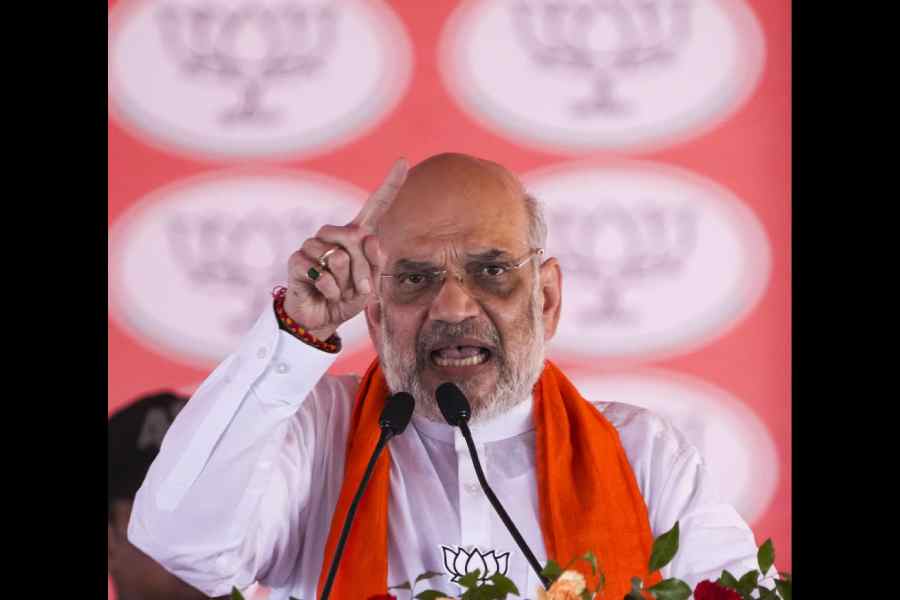When the hand of fate deals a heavy blow, a trail of melancholy is left behind. Or despair, if it falls on a hapless investor. And no investor is more vulnerable at the moment than the fixed-income devotee, not when he has witnessed a series of debilitating events in the debt market. Indeed, the time has come for him to check out other asset classes, notably equity and commodity. Pure-play debt strategies may not fetch investors much in the days to come.
Welcome to the world of balance — where stocks spur growth, bonds provide ballast and gold acts as a hedge. Portfolios comprising only fixed-income assets are now perceived as more than just a tad regressive. They typically fail to outdo inflation and income tax, the deadliest of enemies. Ergo, equity is the answer, but with a tinge of caution. To go long on equity is perfectly reasonable; to have absolutely no recourse to secondary asset classes (stocks, commodities, real estate) is not the most sane principle to follow.
Consider the odds. A hundred per cent equity strategy is devoid of diversification. Monitoring it efficiently, and keeping pace with the quirky stock market, is quite a challenge. Few can do it effectively without breaks or without committing mistakes. A 10 per cent gain in the first season can be followed by a 10 per cent loss in the next. Easy come, easy go.
At the other end of the spectrum is debt. Even the most conservative investor will agree that lacing fixed-income with equity should lead to smarter returns in the current circumstances.
However, the investor concerned must allocate enough time. One-trick ponies are not so rare in the equity space, but they can often spawn false hopes.
Let me briefly take you through the dynamics of a mixed portfolio. Or, to use a more common term, a diversified tactic. You will, at first glance, notice the presence of at least two or more asset classes. A blend of debt, equity, gold, real estate, alternative assets — it is difficult to pinpoint a winning combination — will attract many followers. I can cite a number of instances where combinations have worked in favour of investors.
Take, for instance, the period marked by Covid-19 and the early days of the Russian invasion. Inflation reached new highs in a number of spots around the world. Commodity prices advanced sharply, which led to strong inflation numbers.
Gold, however, did quite well during this period and subsequently. So did real estate in some parts of the world. Portfolios which had consciously included the noble metal and property demonstrated their combined power. And stocks too bounced back, at least in India. Debt, meanwhile, has remained rather tame during this period.
The point is, identifying a winning combination is indeed desirable — but it is most difficult to achieve. Should I allocate 50 per cent of my assets to equity, and invest the rest equally in the other asset classes? Or, will I keep my focus principally on fixed-income and gold, which appear rather stable compared to quirky equity and opaque real estate? These questions, and many others, are commonly asked by allocators.
How does it look?
For investors in India, a close look at the major asset classes will reveal a number of points.
n Equity has advanced handsomely in recent times. The Sensitive Index of the Bombay Stock Exchange has lately scaled new peaks. Most large-caps and many mid-caps have gained notably. Some sectors have surged ahead, leading to ebullient sentiments.
n Fixed income has remained a lot less buoyant. The Reserve Bank’s policy on interest rates has modified significantly in the past several quarters. Repo rate adjustments have spooked many debt investors. Right now, even as you are reading this article on Monday morning, rates appear somewhat stable.
n Gold too has seen a definite spike in recent times. The yellow metal did well in terms of its role as an hedge against inflation. For many new investors, it is now an almost regular fixture in portfolios. Gold, one is actually delighted to note, has found takers among younger investors too. The modern participant is happy to buy gold funds (or gold exchange traded funds) or gold bonds. Digital gold, clearly, has an edge over its physical counterpart for the contemporary consumer.
Where do we go from here?
The conservative investor, especially the one who has serious exposure to debt assets, may consider other ways of generating returns. Adding to one’s allocation to stocks may, despite all challenges, be a prudent strategy to pursue.
This, however, must be tempered by the understanding that equity is volatile in nature. The fact that the key indices are now pushing north does not make the going any less uncertain. On the contrary, investors should adopt a graded policy: increase exposure to stocks and commodities when risk-taking ability is higher. And reduce exposure to these assets when risk-taking is no more a worthy option. In other words, investments should be determined by life-stage changes.
To put it in simple terms, the market does not usually expect a senior citizen to take needless risk, particularly when such an individual has retired (that is, has no active income). Risk-taking abilities often morph rapidly when one advances in terms of age. The accompanying chart may give you clues on ideal asset allocation patterns.
It will be argued that no single metric can apply to all investors. True, but some standards can be set as universal examples. A 30 year old may be a lot more comfortable with volatility than a 70 year old individual. This is a general trend, and the actual picture on the ground also underscores the same.
Can there be an ideal mix for a middle-aged individual, still far away from retirement? Such an investor may have already witnessed a couple of distinct market cycles. For him, a thorough analysis of his risk profile is necessary. He will need to ascertain his income and expenses, commitments and liabilities, projected earnings and estimated expenditure. These factors, to be seen through the prism of inflation, should reflect adequately in his financial plan.
Writer is director of Wishlist Capital Advisors
Tax filing exemption
I am a senior citizen above 75 years having pension income and term deposit interest income only from SBI. When I approached the bank with form 12BBA, the branch declined to provide exemption facility from ITR filing stating that branch can only provide form 16. Kindly advise.
Himansu Kumar Patra, Calcutta
Section 194P of IT Act allows resident senior citizens above 75 years conditional relief from filing IT return provided the individual has pension and interest income only and interest is earned from the same specified bank where the individual is receiving pension. You may refer to CBDT notification no. 99/2021 dated 3.9.2021 which states that a declaration has to be furnished by the senior citizen to the bank through form 12BBA. The bank, after allowing for deduction and rebate, will compute the total income of the senior citizen and deduct tax on the basis of applicable rates in force. If your bank is not willing to take your declaration in form 12BBA, that is contrary to the CBDT rule. You may lodge an online complaint with the Centralised Public Grievance and Monitor System.
Short-term FD taxation
I had opened a few short term FD accounts with SBI in 2022-23 which have matured in 2023-24. I understand that the interest earned from these FDs are taxable. Please advise whether to show these earnings in AY 2023-24 or 2024-25? I opted to receive the interest upon maturity in 2023-24.
N.N. Iyer, Calcutta
The income tax return you are filing for assessment year 2023-24 is for income accrued in the financial year 2022-23 which ended on March 31, 2023. Any interest income you have received after March 31 can be disclosed in the income tax return for assessment year 2024-25.










